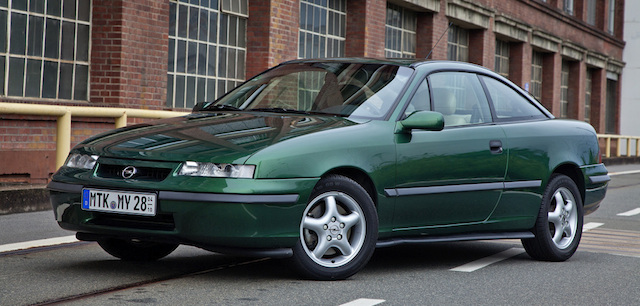
Will Holden move upmarket and take on cars like the two-door Audi A5 and BMW 4-Series with a coupe of its own, a spiritual successor to the Opel Calibra that sold in New Zealand and Australia in the 1990s?
That was the buzz at the Paris motor show after the General Motors-owned German carmaker confirmed it would fill about one third of Holden’s future line-up of models, starting from next year with the Astra hatchback, the two-door Casada convertible and Insignia mid-sized sedan. The small Corsa is also expected, likely rebadged Barina.

More Opel models will arrive Downunder carrying the Holden nameplate when Holden closes its manufacturing operations in Australia from 2017, perhaps earlier if reports from across the ditch are accurate. The closure ends production of Commodore and Cruze.
The possibility of a future coupe with Calibra heritage (1989-1997) came from Vauxhall managing director Tim Tozer, who hinted that such a halo model is on the table, likely based loosely on the 2013 Monza concept. Vauxhall is GM’s British brand; Opel is GM’s European brand. Both brands share and share alike. Tozer told reporters: “We need to walk before we can run, but could it (a new Calibra) happen when we launch the new Insignia that looks like the Monza concept? Yes we could, but it’s a step-by-step process.”
The Monza concept borrowed the name of the Opel Monza GT, a two-door coupe built in Europe between 1978-1986. The 2013 concept was an out-there study complete with roof-hinged doors and sci-fi styling and unveiled at the Frankfurt motor show. It was 4690mm long – the same as the Casada soft-top – and at 1310mm tall was 170mm lower than the Insignia. A production version would obviously be toned down.
Karl-Thomas Neumann, GM executive vice president and president of GM Europe, took the covers off the Monza last year (top) and said that it pointed to future Opel styling.

This week, confirming the one-third supply line for Holden post-2017, he said Opel was in a growth phase that would see it on the front foot. “Every car show now you will see from us major news,” he said.
Opel re-entered the Australian market as a stand-alone brand in 2012 but abandoned it almost to the day 12 months later with paltry sales of only 1600 vehicles.
Now Neumann says Opel is “back, that the brand’s alive.” He told reporters: “The Australian (and NZ) market and Holden brand is important for General Motors. One of the responsibilities of Opel is now to supply certain models.
“With brands you’re selling a story, you’re selling a dream and the cars must somehow fit to that brand. There’s also lots of appreciation (from Holden) for a sporty car which drives well with a sporty engine.
“We will really work intensively with Holden to understand what makes the brand, what modifications we will make. We want these cars to be true Holdens.”
Neumann said Holden would be able to tweak suspension settings and do minor adjustments to tailor the car for the New Zealand and Australian markets.
Opel has been part of Holden since the 1970s, when the Opel Rekord formed the basis of the original VB Commodore of 1978. The underpinnings and styling of large Opels continued to influence Commodores until the arrival of the Australian-designed VE Commodore in 2006.
- The front-drive Calibra was the most aerodynamic production car in the world, with a drag coefficient of 0.26 when it was launched in 1989. It remained so for 10 years until the Honda Insight unseated it. Around 240,000 Calibras were built, most using a 2.0-litre four-cylinder engine. A 2.5-litre V6 found its way into just over 12,000 examples. There were also 3385 all-wheel drive versions.

